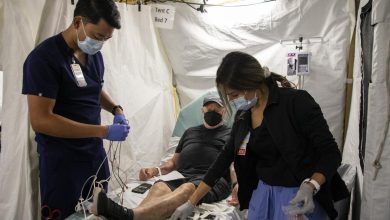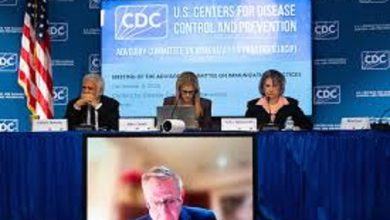Virginia Updates Its COVID and MMRV Vaccination Policies for 2025

When policy changes affect our health, our families, and our communities, they deserve our attention. In the Commonwealth of Virginia, new guidance for 2025 regarding both the COVID‑19 vaccine and the combined MMRV vaccine (measles, mumps, rubella & varicella) has been issued. These updates carry emotional weight: they speak to our instincts as parents, as caregivers, as individuals wanting to protect ourselves and those we love. I hope that this article will walk you through the changes clearly, help you feel confident in understanding the reasons behind them, and empower you to engage in meaningful conversations with your healthcare provider.
A New Chapter: Why This Matters
Why should you care about vaccination policy changes in Virginia? Because they touch on fundamental questions: How do I best protect my child? How do I weigh risk vs benefit? And because policy changes often reflect deeper shifts in public-health thinking, from blanket rules to more tailored, individual-based decisions.
In October 2025, the Virginia Department of Health (VDH) announced that it is implementing updates to the immunization schedule recommended by the Centers for Disease Control and Prevention (CDC). These updates affect both the COVID-19 vaccine and the MMRV vaccine. For many families, these changes may bring relief, or raise questions — or both. You may feel relief that the discussion is becoming more nuanced. You may have questions about what to do next. That is completely natural. Let’s walk step by step.
What’s New with the COVID-19 Vaccine in Virginia
The core change
The major shift is that for individuals 6 months of age and older, the decision to receive the COVID-19 vaccine is now framed under what the CDC calls “shared clinical decision-making”, or individual-based decision-making: in essence, you and your healthcare provider (or your parent/guardian if you’re a minor) will talk through the risks and benefits and decide what’s best for you.
In Virginia, this means:
- People ages 6 months and up may receive a COVID-19 vaccine.
- People aged 3 years and older may receive a COVID-19 vaccine at a pharmacy without a prescription.
Why this matters
This shift is emotionally significant. For years during the pandemic, vaccination campaigns emphasised universal coverage and mandates in many places. The new guidance acknowledges that one size does not necessarily fit all. It invites you into the conversation: Are you at higher risk because of an underlying condition? Are you healthy and prefer to evaluate timing and type? These are real questions with personal implications.
What you should ask / what you should consider
- Speak with your doctor or pharmacist: what is your personal risk for COVID-19 complications?
- If you have children, what does this mean for them? What does your pediatrician recommend?
- For adults: am I in a group (age, health condition) for whom vaccination may make more difference?
- For anyone: are vaccines accessible at my local pharmacy or clinic, and what version/formulation is recommended?
How to navigate it
- Make an appointment or drop by a pharmacy if you’re 3 years or older and want a COVID-19 vaccine.
- Bring a list of your health conditions (if any) and ask your provider how this policy applies to you.
- If you are responsible for children, especially younger ones, ask whether this decision-based model shifts your family’s plan.
This change emphasises empowerment. It’s not “you must do this” — it’s “let’s discuss whether this is right for you or your child.” That message matters.
What’s New with the MMRV Vaccine in Virginia
The core change
For the combined MMRV vaccine (that protects against measles, mumps, rubella, and varicella/chickenpox), the change is as follows:
- Children under the age of 4 years are no longer recommended to receive the combined MMRV vaccine. Instead, they should receive the separate vaccines: the MMR (measles, mumps, rubella) and the varicella vaccine separately.
- Children aged 4 years and older can still receive either the combined MMRV vaccine or the separate MMR + varicella vaccines.
Why this matters
This is emotionally significant, especially for parents of young children. Many families prefer fewer injections — fewer appointments. The combined vaccine offered simplicity. With the change, the guidance emphasises safety and personalised care: for the youngest children, the evidence (including concerns about febrile seizures) has pushed policy toward separating shots. While the change may mean a little more time at the clinic, it also reflects a more precise approach to protecting children.
The reasons behind the change
According to the CDC and Virginia’s health department:
- The risk profile for children under 4 receiving the combined MMRV versus separate MMR + varicella shifted the recommendation.
- The first doses of MMR and varicella vaccines are still recommended at 12–15 months of age; the second doses at 4–6 years of age.
What you should ask if you are a parent
- If your child is under 4, ask whether they are better off with separate MMR and varicella vaccines rather than the combined one.
- What timing is best? Are there scheduling changes?
- For children 4 years or older: what are the pros/cons of combined vs separate?
- Does your child have any health conditions that might affect how they respond to the vaccine?
Navigating the change
- Review your child’s immunisation schedule and check whether the change affects their next shot.
- Talk with your pediatrician, share any concerns you have (e.g., about injection number, side effects, convenience).
- Remember: the change is about making choices safer, not about indicating that prior practice was irresponsible. It’s an evolution of understanding.
How These Two Policy Updates Tie Together
The overarching theme for Virginia in 2025 is personalised, informed decision-making. Whether it’s COVID-19 or the MMRV vaccine, the emphasis is on:
- engaging patients/parents and healthcare providers in a conversation, rather than a rigid mandate;
- adjusting recommendations based on age, risk, and evidence;
- ensuring access (for instance, pharmacies can now vaccinate people aged 3+ for COVID without a prescription).
These policies reflect a shift from “everyone must get this vaccine at this time” to “let’s talk about what’s right for you or your child.” For many, that’s reassuring. For others, it might prompt uncertainty — and that’s okay. The important thing is to ask the right questions, seek good information, and make a thoughtful decision.
The Emotional Landscape: What You May Be Feeling
If you’re a parent with young children
You may feel uncertainty: “Is my 2-year-old alright with this change? Will they still be fully protected?” That’s understandable. The good news: the guidance is designed to maintain protection, just via a slightly different route. You may feel relief that the policy acknowledges nuance. You may also feel frustrated that the timeline or schedule may shift. That’s natural.
If you’re an adult (or caring for one)
You might have thought that COVID-19 booster shots were automatic. Now, you may feel empowered — or you may feel the weight of decision-making. Ask yourself: What is my risk? What is the benefit for me at this time? That reflection matters.
If you’re a healthcare provider or advocate
This is a pivotal moment to emphasise communication. The shift toward shared decision-making invites deep listening. Patients may have heard mixed messages before. Now, you have an opportunity to engage, explain, reassure, and personalise.
Practical Steps You Can Take Right Now
- Review your personal or family vaccination records.
Do you know when the last MMR, varicella, or COVID shot was given? Are you due/overdue? - Schedule a discussion with your healthcare provider or pediatrician.
Bring a list of questions:- For COVID: What is the new formulation (2025-26 version)? What are the side effects, risk profiles?
- For MMRV: If the child is under 4, why separate vaccines? What are the benefits/risks?
- Check access at your local pharmacy or health clinic.
Many pharmacies in Virginia now vaccinate individuals aged 3+ for COVID without a prescription. Confirm age-groups, hours, and availability. - Stay updated with reliable information.
The Virginia Department of Health website, as well as trusted pediatric/medical associations, will provide FAQs and tools. - Empower yourself to ask the right questions:
- “What is the vaccine formulation available now?”
- “Why has the recommendation changed for my child’s age group?”
- “What are the specific risks or benefits for someone in our health situation?”
- “What is the plan for the next dose, and when?”
- Be open to ongoing change.
Vaccination policy is not static. As evidence accumulates, guidance evolves. Staying informed means being adaptable.
Why You Should Follow This Story and Stay Engaged
Because even when you’re not a healthcare professional, these policy shifts affect you — as a parent, a worker, a citizen, a friend. Here’s why:
- Vaccination decisions often affect school entry, daycare enrolment, travel planning, and family gatherings.
- Awareness gives you agency: instead of reacting to change, you lead your conversation with your provider.
- In times of public-health change, communication matters: your questions, concerns, and voice help ensure safe and considered coverage.
- Staying engaged means you can support others: grandparents, siblings, friends with children — you might become the bridge between policy and peace of mind.
Addressing Common Concerns & Myths
Concern: “If the combined MMRV isn’t recommended for under-4s anymore, does that mean the old way was dangerous?”
Answer: No. The old way was consistent with prior evidence. What’s changed is that newer data and risk profiles (e.g., for very young children) prompted an update. The new recommendation is about fine-tuning for safety and efficacy.
Concern: “Does the shared-decision model for COVID mean the vaccine is optional or useless?”
Answer: Not at all. It means the decision is now more individualized rather than automatic. For many people — especially those at increased risk — vaccination remains strongly advised by providers. The key is a dialogue about what you need.
Concern: “Will separate shots (MMR + varicella) mean more injections, more visits?”
Answer: Possibly one extra shot or one extra appointment, in certain cases. But the timing of vaccine doses still remains aligned with established schedule windows (first doses at 12–15 months, second dose at 4–6 years for children under 4).
Concern: “If pharmacies can give COVID vaccines to kids 3+ without prescriptions, is it safe/regulated?”
Answer: Yes, provided the pharmacy adheres to state/local licensing, follows age-group guidelines, and staff are trained. But always check beforehand: some pharmacies may limit age groups or require appointments.
A Personal Call to Action
Here’s my invitation to you:
Take 15 minutes this week — check your family’s vaccination status, look up your provider’s schedule, write down a few questions, and make the call. Whether you’re a parent, an adult thinking of your own health, or someone who helps others navigate health decisions, you have an opportunity now to act.
Because feeling confident about your family’s health isn’t just about “getting the shot” — it’s about understanding, choosing, and partnering with your healthcare provider. These policy changes reflect respect for that partnership. Embrace it.
Final Thoughts
In Virginia in 2025, we’re seeing something subtle—but meaningful: a shift toward personalization in vaccination policy. The changes to the COVID-19 and MMRV guidance aren’t about lesser protection — they’re about smarter protection, better communication, and more tailored care. For you, your children, your community, this means fewer surprises — and more informed decisions.
This isn’t a moment to be passive. This is a moment to ask, to listen, to act — because your health, your child’s health, your family matters. Let this policy update be your prompt to engage.
Take the next step. Reach out, learn what applies to you, and move forward with clarity and confidence.




